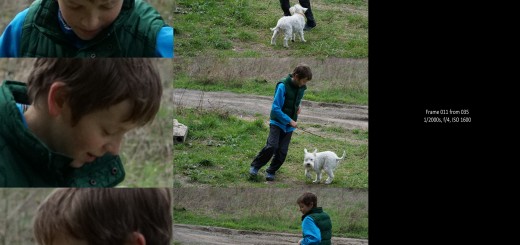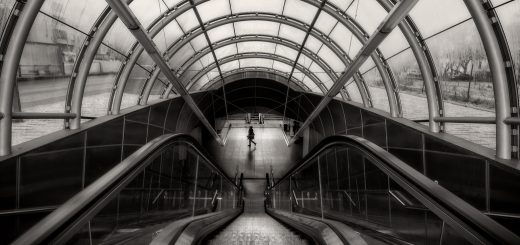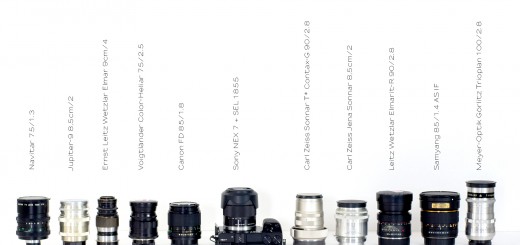Four Macro 50mm lenses – brief shot out
2. Takumar 50mm F4 Macro – original 1st version with 1:1 magnification ratio
3. Olympus Auto-Macro 50mm f/2 OM
4. Canon FDn 50mm f3.5 MacroOnly Takumar has native 1:1 magnification. Other lenses achieve 1:2 Magnification and Olympus and Canon have their native adapter tubes for 1:1.
Point of this shot out was to show the differences (however insignificant they are) between those contenders, as many find 50mm to be an attractive general purpose lens with macro capabilities, even that on APS-C sensor, FOV is closer to 75mm.
Zeiss ZE is the mot expensive lens here. With a price for a new above 1200 USD, and with additional Metabones Smart adapter for 430 USD (with shipping), it is certainly not a budget solution. The lens however is still in production in many other mounts and as such, it can serve double systems.
It has also very good reputation across respected test sites.
Olympus 50mm f2 Auto-Macro is rather rare and not a cheap lens either. I got mine for 350 USD, but with a damaged filter thread and signs of use on the barrel. Optically it is good sample. It is very well built and quite small in comparison to Zeiss. This is one of the sharpest lenses I own, and overall, probably one of 10 best lenses in my collection. Not many people knows about it.
Another kind of exotic lens is original Macro Takumar 50mm. There is also SMC Takumar 50mm Macro, but it only goes to 1:2 Magnification. I like this Takumar very much.
Finally, the cheapest but far from worst in the field is also smallest and lightest Canon FDn 50mm f3.5
Let’s see how they perform wide open.
 |
| Zeiss ZE 50mm f2 at f2 |
 |
| Olympus Auto-Macro 50mm f2 OM |
 |
| Macro Takumar 50mm f4 |
 |
| Canon FDn 50mm f3.5 |
Beside differences in DOF, there is not much to choose between.
For flower like this, most of us will probably stop the lens to at least f/5.6 however. So let’s see how comparison look at that f-stop.
 |
| Zeiss ZE 50mm f/2 at f/5.6 |
 |
| Olympus Auto-Macro f/2 OM at f/5.6 |
 |
| Macro Takumar 50mm f/4 at f/5.6 |
 |
| Canon FDn 50mm f/3.5 at f/5.6 |
Pick your favorite look, my vote at f/5.6 goes with a Takumar. But overall, I can’t say -that one image is better than the other. They are slightly different, but that is matter of taste, not technical quality.
Finally – here is approximate difference between magnification of 1:2 and 1:1
 |
| 1:2 Magnification with Canon FDn 50mm f/3.5 |
 |
| 1:1 Magnification with Macro Takumar 50mm f/4 |
All shots presented here were taken with a NEX 7, in RAW converted in LR with standard settings, from tripod with a remote control. Focus however was hard to place exactly on the same spot, so it varies a bit. But all those macro fifties are very sharp, especially when stopped down to f/5.6 or f/8.
If I would have to pick one of those, I would need to set-up priorities
For maximum subject isolation, and fastest shutter speeds (handy in windy conditions or when shooting moving subjects), Zeiss or Olympus are clear winners. Between the two, I like more Olympus wide open and Zeiss stopped down. If you have Canon, Nikon or Sony FF DSLR, Zeiss would be probably better choice (but Oly can be used on Canon too).
Best price/performance ratio goes to Canon FDn. This lkens can be found for well bellow 100 USD and it is very good lens indeed. On top of that, it is lightest and smallest of all here.
Lens with most specific rendering and real 1:1 macro is Takumar. I also like bokeh that this lens render when stopped down to f/5.6 and more. For this particular shit, Takumar would be my choice.
So, if you have any of those four macro lenses, you should be very happy camper.
To help this page survive, your donation will be highly appreciated.














Try Leica R 60/2.8. 🙂 Maybe with 1:1 adapter.. I think you might be pleased with results.
I love that lens. I adapted it for my Nikon, so I can’t use it with 1:1 adapter, but I use it more for street and landscape anyway. This test was purely about 50mm macro, so I ďecided not to include Macro-Elmarit.
I have a Canon FD 50mm f/3.5 Macro. It’s natively 1:1 and very sharp from wide open on even in the corners. I tested its sharpness against Pentax-M 50mm f1.4, Canon FD 50mm f1.4, Olympus Auto-S MC 50mm f1.8, Rokkor-X 50mm f1.5 and the best Yashica and Konica 50mm lenses and found it as sharp as the above ones! Truly wonderful lens. I use it on NEX-F3 with an adapter. Manual focusing easy. Paid only €55 on ebay. Highly recommended for its sharpness and easy to use. Bokeh just ok.
As far as I know, Canon FD 50 f/3.5 Macro is natively 1:2, but with the adapter ring it becomes 1:1. It’s a good lens for macro but a bit too slow for general use. It is however great value for money.
I use an older Lester Dine 105mm F2.8 macro. Made for the Dine Corp (cater to the Dental profession) by Kino Precision… One sharp lens…..Goes to life size on it’s own…
Thanks for review, it was excellent and very informative.
thank you 🙂
Takumar pics are better lit (sun?) showing highlights and shadows that’s why they look better.
Yes Paul, it’s the sun that shown for a while. It’s always difficult to directly compare more things outside, because the weather/lighting changes all the time…